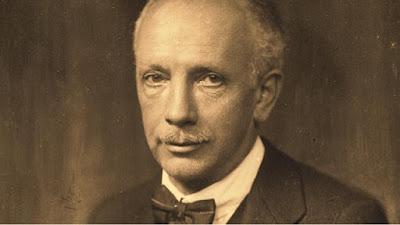by Paul J. Pelkonen

Next to big companies like the Metropolitan Opera, New York City Ballet and New York Philharmonic, the Chamber Music Society of Lincoln Center sometimes gets overlooked. Each year, this gathering of top-flight musicians assembles a series of concert programs devoted to little more than celebrating the beauties of works written for smaller groups of musicians, usually ranging from duo to octet. On Tuesday night, the CMS musicians gathered for the last concert of the spring 2016 season, a program of Richard Strauss, Brahms and Dvorak that explored very different periods of each composer's career.
In the years following his brief, shaky term as the Reichskammermusikdirektor under Hitler's Nazi regíme, Richard Strauss found himself in artistic and personal retreat. His last opera, Capriccio drips with nostalgia and self-referencing passages. It is, in the composer's own words, a "conversation piece for music" a one-act, somewhat abstract dramatization of the meaning of opera and the endless struggle of words vs. music. As .the war raged in 1941 and '42, Capriccio became Strauss' refuge.
Capriccio opens with a dulcet sextet for paired violins, violas and cellos. Separated from its mother composition, this work shows Strauss' mastery of interwoven melodic lines and ability to build and release chromatic tension using just six instruments. The players: cellists David Finckel and Nicholas Canellakis, violists Yura Lee and Matthew Lipman and violinists Erin Keefe and Ani Kafavian, played this short work with passion, particularly in the ardent middle section that shows the passions that burn beneath the genteel exterior of this drawing-room opera.
Next up was Brahms' F Major Quintet, in three movements and written on one of those bucolic southern Austia holidays that also resulted in the Symphony No. 2. This is a high-energy work in three movements, with Brahms' brand of thoroughly classical counterpoint employed in the depiction of a composer on holiday.
The five players surged through the opening movement, a harmonically complex working- out of sonata form, found a rich stillness in the central slow movement and played the complex, contrapuntal finale with the right combination of precise execution and bubbling energy.
The good mood carried ver into the final work of the evening: the Dvorak Sextet in A Major. This is he work that freed Dvorak from the respectable but obscure job playing viola in a Bohemian orchestra and showed Central Europe that another great composer was in their midst. It is four movements and incorporated traditional Bohemian dances in between more classically structured outer movements.
The work plays its cards early wth a bold opening idea followed by a catchy second subject played by the first viola. This launches a long thoroughly worked out sonata form, rigorous in its musical logic and yet replete with memorable tunes. The slow Dumka movement hides a smile behind its spinning, mournful dance, and the bold, violent Furiant bristles with rude peasant energy. The finale is a theme and variations, working it the viola theme from the first movement before boiling to a high-energy finish.

